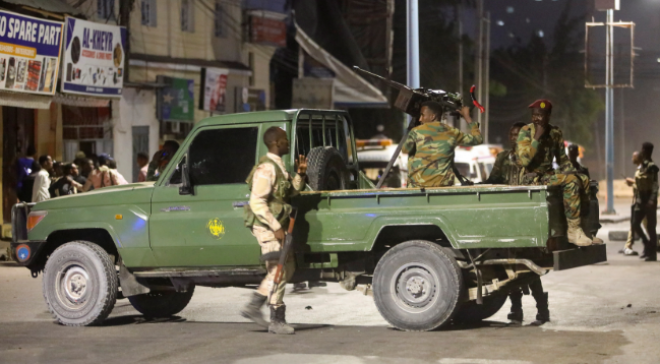AU mission in Somalia agrees to downscale troops as exit timeline nears
KAMPALA, Uganda - The process of downscaling military presence in Somalia has been given the green light, a conference held in Kampala, Uganda has determined, with Troops Contributing Countries agreeing on a framework to implement the Somali Transition Plan [STP] which had been delayed for a couple of months.
Currently, the African Union Transition Mission in Somalia [ATMIS] has close to 22,000 troops mainly drawn from Uganda, Burundi, Kenya, Djibouti, and Ethiopia with the soldiers working in the country on a rotational basis under a Force Commander. ATMIS is also responsible for training and equipping Somali National Army [SNA].
The conference bringing together all stakeholders in Somalia's peace-building process agreed to drawdown 2000 soldiers by June 2023, with an additional 3,000 also expected to leave "subject to security situation" in the country, the communique issued by the leaders stated.
Once this process is fully implemented, the Somali National Army is expected to take over security responsibilities from ATMIS as Somalia starts a rebuilding process. It is anticipated that by December 2024, most of these foreign troops who are instrumental in the Al-Shabaab war, would have left for their home countries.
"Summit of Troop Contributing Countries to ATMIS agreed on drawdown procedures for ATMIS troops and advocated adequate funding and logistical support for SNA," the statement stated while acknowledging immense contributions by the African Union-backed soldiers.
Funding of the operations by the troops has been a logistical nightmare with stakeholders mainly the European Union [EU], the United States, and United Nations struggling to pay arrears owed with accountability issues also surrounding the payment process. To date, many soldiers are yet to receive their dues.
In a statement, ATMIS acknowledged that the fight against Al-Shabaab has been the most expensive peacekeeping mission, with over $200 million used for compensation of soldiers who may have died and, or gotten injured while on the Tour of Duty. Roughly, at least 3,500 soldiers have died since ATMIS ventured into Somalia in 2007.
President Hassan Sheikh Mohamud who has been vocal in the Al-Shabaab war and who attended stakeholders meeting in Kampala, has started the mission of equipping and training more soldiers who are expected to take over from ATMIS. Somalia has entered partnerships with Uganda, Ethiopia, and Eritrea for the training of more soldiers.
Troops Contributing Countries also maintained that their ATMIS Force will respect Somalia's "territorial integrity and political independence" while assisting in the fight against Al-Shabaab, adding that the local troops will be fully in charge of the "stabilization" mission which has kicked off in earnest across the country.
Consequently, the team also backed Somalia's quest for the lifting of the arms embargo by the United Nations Security Council, noting that such a move will help the country fully take charge of purchasing weapons without many sanctions by members of the international community.
"In addition, it reiterated calls for the lifting of the arms embargo on Somalia and the implementation of the Somali Transition Plan," read the communique which was approved by all participants unanimously, giving the country a cutting edge in the next meeting by the Security Council.
The communication comes at the time Somalia is preparing for the second phase of operations against Al-Shabaab following a largely successful mission that led to the killing of over 3,000 militants. Already, the EU has approved €4.5 million which will help in the stabilization of towns liberated from Al-Shabaab terrorists.
GAROWE ONLINE

















